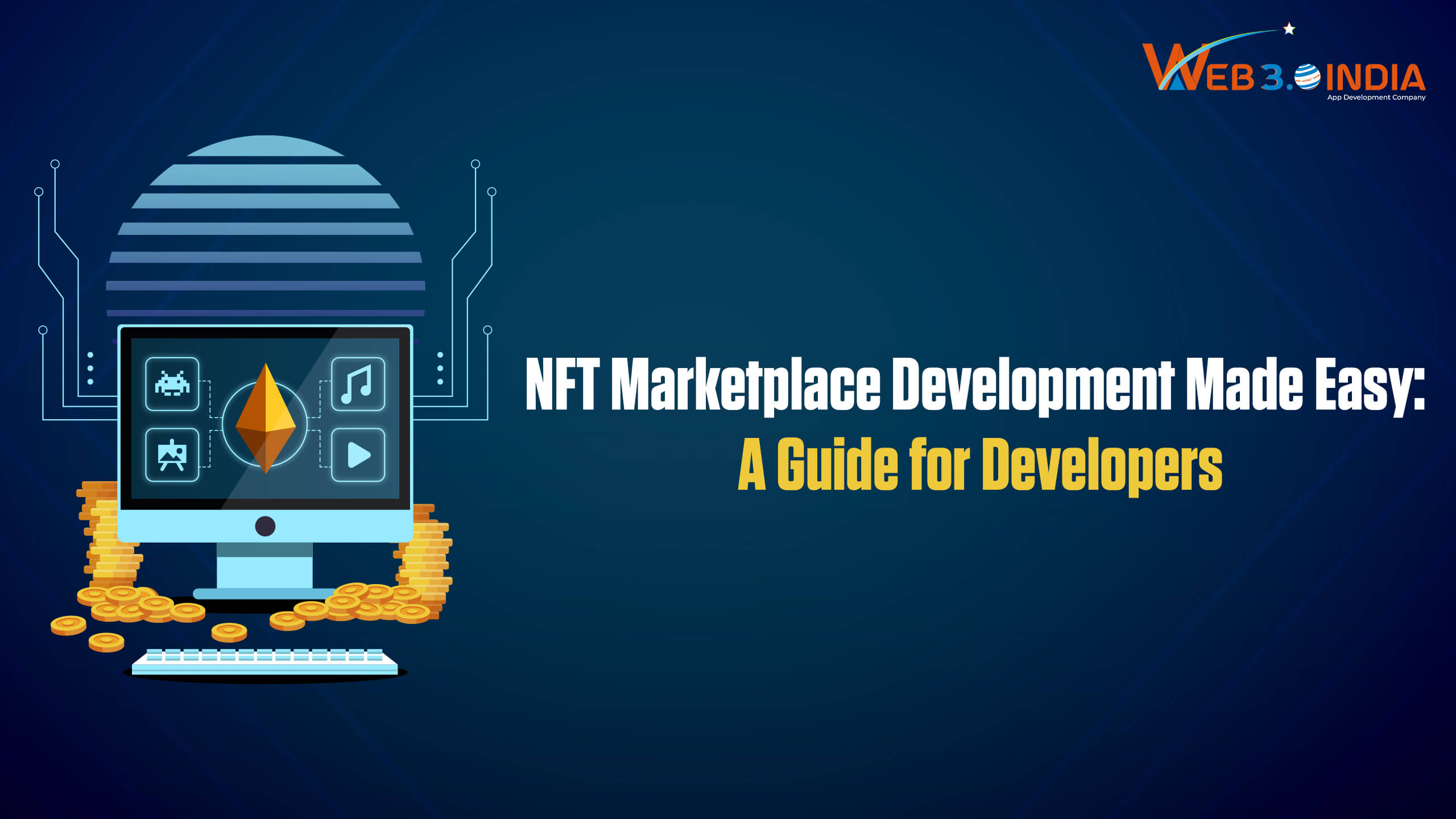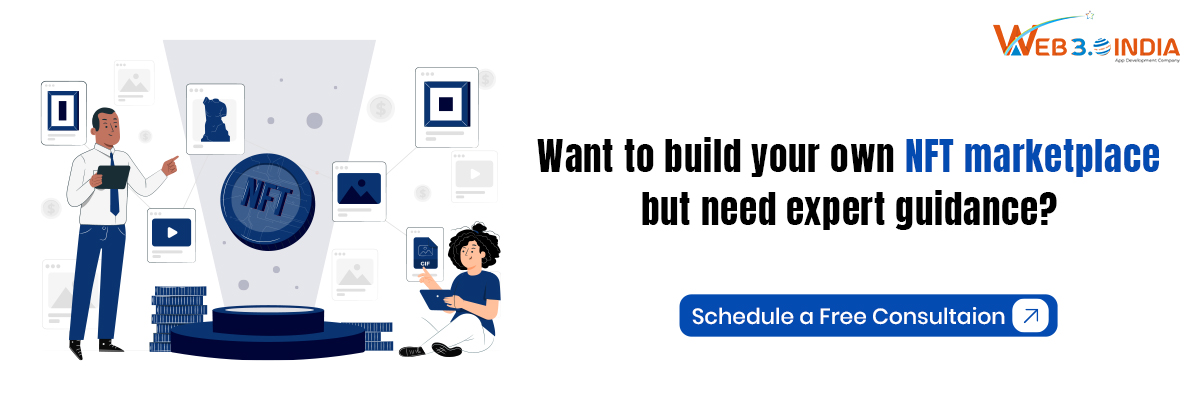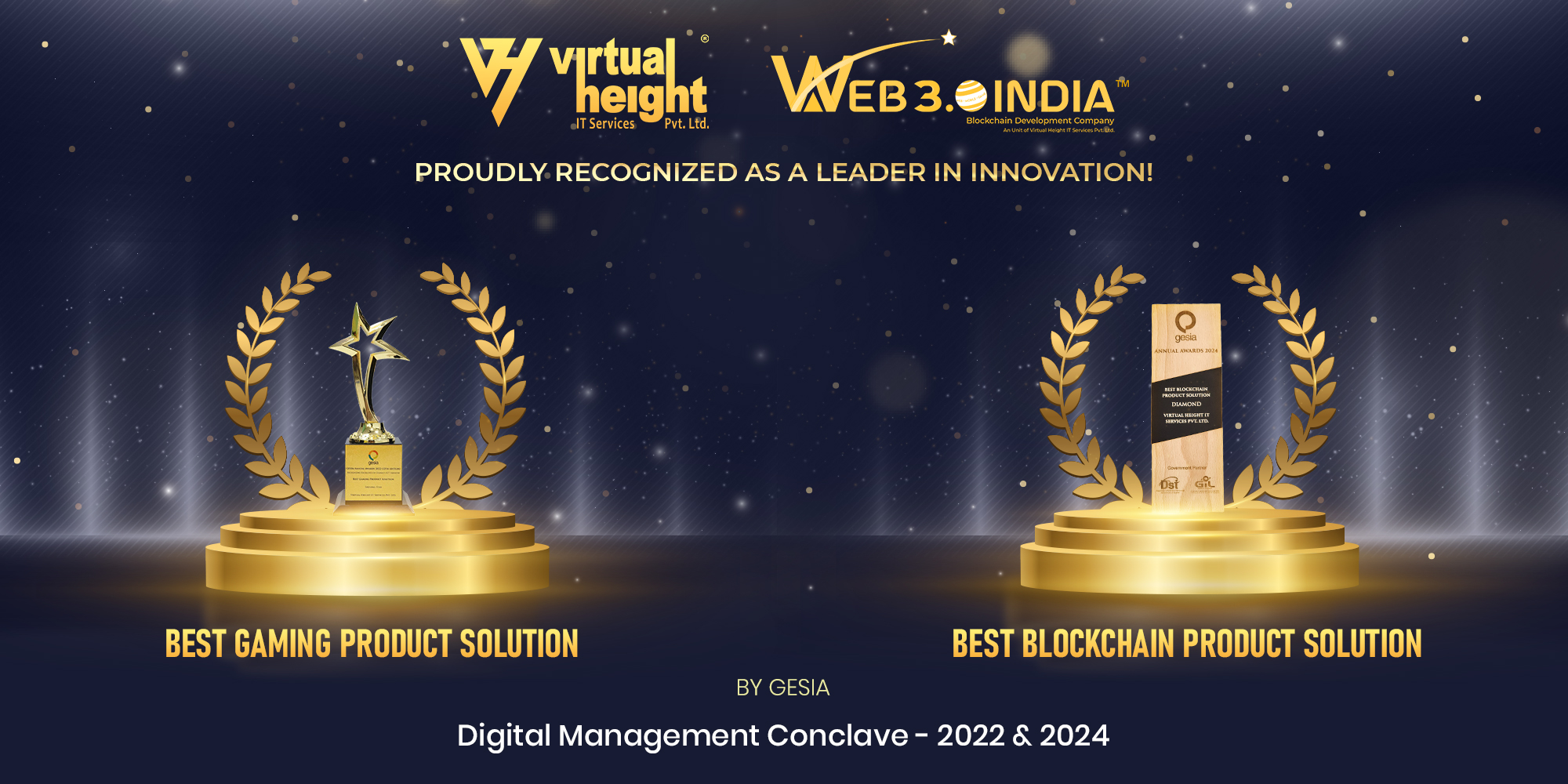Introduction
Non-Fungible Tokens (NFTs) have changed the digital landscape by furnishing makers and collectors with a better approach to bringing in cash and getting remarkably advanced resources. For purchasing, selling, and exchanging these tokens; as well as a more extensive scope of digital merchandise including music, accounts, and virtual land NFT marketplace development has arisen as fundamental marketplaces.
This advancement has prodded developers to build custom NFT platforms, planning to address explicit specialties and improve user encounters.
Key parts of an NFT marketplace incorporate user registration and authentication, NFT creation and management, smart contract development, payment door coordination, and a user-accommodating connection point. These components, overall, guarantee a protected, versatile, and proficient climate for users to use NFTs. By focusing on these basic perspectives, developers can create platforms that satisfy the developing need for novel digital assets and add to how to create an NFT marketplace.
Step 1: Choosing the Right Blockchain for NFT Marketplace Development
Popular Blockchain Options for NFT Development
Selecting the fitting blockchain is significant when constructing an NFT marketplace, as it straightforwardly impacts adaptability, transaction speed, and community support.
- Ethereum: As a trailblazer in the NFT marketplace development guide, Ethereum has modern smart contract capacities and a huge client base. Nonetheless, it has difficulties, such as high gas costs and restricted versatility, two of which can affect the client experience.
- Alternatives: Elective blockchains incorporate Binance Smart Chain, Solana, Polygon, and Stream. These stages, as a rule, give scaled-down transaction costs and more limited handling times, making them engaging for NFT marketplace development.
- Key Considerations: When selecting a blockchain, it is basic to consider its capacity to oversee enormous transaction volumes and community support to guarantee a flourishing climate for your NFT marketplace.
Factors to Consider When Selecting a Blockchain
When constructing an NFT marketplace, selecting the right blockchain is basic. Key perspectives to consider are:
- Support for Smart Contracts and NFTs: Confirm that NFT and smart contract standards like ERC-1155 and ERC-721 are viable with the blockchain. While ERC-721 is often utilized for inventive PC assets, ERC-1155 widens viability by consolidating both fungible and non-fungible tokens inside a solitary contract.
- Cost-Effectiveness and Environmental Impact: Evaluate the energy usage of the blockchain and transaction fees. Lower fees and environmentally friendly consensus methods on blockchains can reduce operating expenses and align with manageability goals.
By cautiously evaluating these factors, you can pick a blockchain that lines up with your NFT marketplace’s specialized necessities and business targets.
Step 2: Developing Smart Contracts for NFTs
Creating vigorous smart contracts is a foundation for building a protected and proficient NFT marketplace development. These self-executing contracts automate transactions and uphold the terms of agreements without mediators.
Key Functions of Smart Contracts
- Minting, Transferring, and Burning NFTs: Smart contracts give the arrangement (minting), transfer, and destruction (burning) of NFTs, guaranteeing the steady administration of modernized assets. For instance, the ERC-721 standard characterizes a fundamental interface for NFTs, including strategies for transferring and querying ownership.
- Royalty Mechanisms and Ownership Verification: They execute royalty mechanisms, permitting makers to get a level of sales in secondary markets. Also, smart contracts confirm ownership, ensuring that main legitimate owners can transfer or sell NFTs. This verification is essential for maintaining the trustworthiness of the marketplace.
Tools and Frameworks for Smart Contract Development
- Solidity for Ethereum and EVM-Compatible Chains: Solidity is the primary programming language for developing smart contract terms on Ethereum and other EVM-compatible blockchains. It offers a rich arrangement of features and an enormous developer community.
- Rust for Solana: For Solana-based NFTs, Rust is the favored language, and it is known for its presentation and safety features. Solana’s high throughput and low latency make it appropriate for applications requiring quick transaction speeds.
- Testing Tools: Using testing frameworks like Hardhat, Truffle, and Remix IDE is fundamental for reproducing contract conduct, recognizing vulnerabilities, and ensuring unwavering quality before organization. These tools give conditions to test contracts under different situations, upgrading security and execution.
Ensuring Security in Smart Contracts
- Importance of Audits: Directing exhaustive audits is imperative to distinguishing and alleviating vulnerabilities in smart contracts. Audits assist with forestalling and taking advantage of that, which could prompt financial losses or reputation harm. Drawing in with respectable reviewing firms or using automated tools can upgrade contract security.
- Tips: Integrating laid-out libraries like OpenZeppelin can provide secure and tested implementations of normal functionalities, lessening the chance of mistakes. Also, performing comprehensive testing, including unit, mix, and stress tests, is significant in guaranteeing the contract’s strength under different circumstances.
Step 3: Designing the User Interface and Experience
Designing an intuitive and engaging user interface (UI) is fundamental to building an NFT marketplace. A well-designed UI improves user experience, empowers connection, and encourages trust inside the platform.
Key Features for NFT Marketplace UI
- Intuitive Navigation: Use clear and direct navigation to facilitate simple browsing and searching of NFTs. Coordinate classes successfully and provide hearty hunt functionalities to assist users with quickly finding desired assets.
- Wallet Integration: Integrate popular cryptocurrency wallets to empower consistent transactions. This integration permits users to deal with their assets and conduct purchases or sales straightforwardly inside the marketplace.
- Real-Time Updates: Integrate real-time updates for bidding and auctions to keep users informed about the most recent exercises. This element improves commitment and guarantees users’ knowledge of current market elements.
Tools for Frontend Development
- Popular Frameworks: Use frontend frameworks like Respond, Vue.js, or Rakish to build dynamic and responsive user interfaces. These frameworks offer hearty tools and libraries to smooth out development processes.
- API Integration: Use libraries like Web3.js or ethers.js to integrate blockchain functionalities into the front end. These libraries work by communicating between the user interface and the blockchain, empowering features like wallet connections and exchange handling.
Ensuring a Responsive and User-Friendly Design
- Platform Optimization: Guarantee the marketplace is advanced for both portable and work area platforms. A responsive design adjusts to different screen sizes, giving a reliable and user-friendly experience across devices.
- UI/UX Best Practices: Consolidate best practices in UI/UX design to upgrade openness and convenience. This incorporates utilizing suitable alignments, and simple templates, and staying away from cluttered backgrounds to create a perfect and intuitive interface.
Step 4: Backend Development and Integration
Fostering a powerful backend is essential while building an NFT marketplace development guide, as it guarantees data respectability, security, and scalability.
Setting Up a Decentralized or Hybrid Architecture
- Decentralized Storage Options: To store NFT metadata and media files, use decentralized storage arrangements like IPFS (InterPlanetary File System) and Arweave. These platforms offer immutable and dispersed storage, enhancing data security and accessibility.
- Hybrid Models: Join centralized servers for performance optimization with decentralized blockchains for enhanced security. This approach balances the requirement for speed with the advantages of decentralization, guaranteeing a strong and proficient infrastructure.
Scalability and Performance Considerations
- Caching and Load Balancing: Execute caching mechanisms to store regularly accessed data, lessening retrieval times and server load. Utilize load balancing strategies to convey traffic equitably across servers, guaranteeing a smooth client experience in any event during popularity periods. These strategies are crucial for maintaining performance as the marketplace scales.
Step 5: Testing and Launching Your NFT Marketplace
Launching an effective NFT marketplace requires careful testing and key pre-launch marketing. This means guaranteeing a safe, user-friendly platform and fabricating expectations inside the community.
Testing the Platform Thoroughly
- Smart Contract Security Testing with Audit Tools
Before deployment, thoroughly test smart contracts utilizing particular audit tools to distinguish and redress weaknesses. This interaction is vital to prevent possible adventures and guarantee the uprightness of transactions inside your NFT marketplace.
- Ensuring Smooth Wallet Integration and Transaction Processing
Check that wallet integration capability consistently, permitting users to oversee resources and conduct transactions without issues. Smooth transaction processing is imperative for user fulfillment and confidence in your platform.
Pre-Launch Marketing and Community Building
- Engaging Users and Creators via Social Media and Forums
Influence platforms like Twitter, Friction, and particular NFT forums to draw in possible users and creators. Routinely share updates in the background content and intelligent meetings to construct a community around your marketplace.
- Building Trust by Featuring Security and Exceptional Highlights
Impart the security estimates carried out in your marketplace to console users. Feature remarkable elements that put your platform aside, like select NFT assortments, creative bidding systems, or upgraded user interfaces. Straightforwardness and particular contributions can help users gain certainty and interest.
By thoroughly testing your platform and decisively engaging with the community, you establish a strong starting point for a fruitful NFT marketplace launch. These endeavors guarantee a safe and practical platform and cultivate a faithful user base anxious to participate in your marketplace.
Conclusion
Building an NFT marketplace includes an organized methodology, beginning with choosing the right blockchain that meets scalability and transaction needs. At Web 3.0 India, we emphasize Smart contract improvement guarantees secure, effective handling of NFTs, while instinctive UI/UX design makes a consistent user experience. Intensive testing, including security audits and smooth wallet integration, ensures the platform’s unwavering quality.
Pre-launch marketing and community building further add to making a strong user base. By following these means, developers can make a practical, secure, and engaging NFT marketplace that draws in the two creators and collectors, ensuring long-term progress in how to create an NFT marketplace? By carefully following these means, you can construct an NFT marketplace that satisfies specialized guidelines as well as stands out in a serious and developing digital space.





